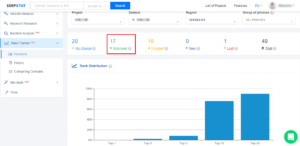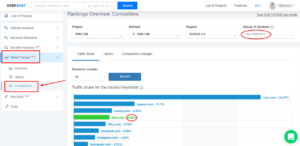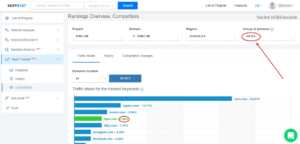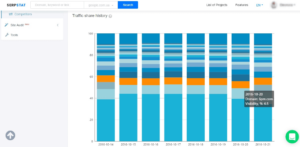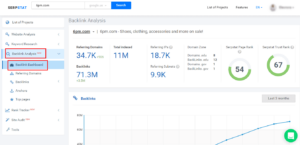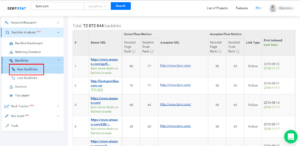Basic search engine optimization (SEO) is a fundamental and essential component of any website promotion strategy. Ranking on top in an organic search is a sure way to increase traffic and bring more potential clients.
In other words, every website needs SEO to succeed. Whether you optimize the website yourself (using free resources like FirstSiteGuide) or hire an agency, it’s always good to know whether your SEO strategy works.
Leave your doubts behind because, in this article, we are going to list some ways of measuring your SEO’s efficiency.
1. Rank Tracking
Monitoring how your company is ranking for target keywords is a great way to know if you’re heading in the right direction with your strategy.
If you do not rank for your most relevant keywords, you will experience a decrease in organic traffic. This, in turn, will affect your lead generation and eventually, sales and revenue. Keywords matter and it is necessary to track the ups and downs.
Set a target keyword for each piece of content you publish; then, use Google rank checker and a rank tracking tool to track your positions.
Be patient. Sometimes it can take weeks or even months to see significant rank increases. It can also take time to see if your position is becoming stable. But, if your website is properly optimized, positions will definitely improve. As you start ranking higher for more keywords, your visibility will increase and your organic traffic will grow.
Set a target keyword for each piece of content you publish; then, use Google rank checker and a rank tracking tool to track your positions.
2. Advanced Rank Tracking
In case you know how to use a rank tracking tool properly, but common information doesn’t satisfy you anymore, we are going to explain how to find more useful information.
Keyword Grouping
Want to see how your market share is influenced by your ranking? That’s easy – start with creating keyword groups. The tool we use here is Serpstat; their rank tracking module allows us to create groups, which is what we need.
For example, took the popular e-commerce website domain 6pm.com. We highlighted all keywords related to shoes and set the ‘shoes’ tag.
Later you’ll find out what for.
Market Share Distribution
As we can see, checking our 49 tracked keywords, we find out that 6pm.com occupies 6.48% of market share.
And now it’s time to use the tags we created earlier. We use it to track our market share within a niche. It’s a super useful feature for big websites that sell different groups of products. As we can see, checking the ‘Shoes’ group only, we found different results (7.5% instead of 6.5%). So, by creating tags for each group of products you can track your progress in different niches.
The main takeaway is to add as many keywords for rank tracking as possible. This way, you’ll be able to observe the whole picture of your promotion.
Market Share Distribution History
You can also get the historical data for the market share distribution to see how your market share is changing over time. If it grows, that means you’re promoting with the right keywords.
3. Backlinks
Great content is always the way to go if you want to increase the number of backlinks. If people aren’t clicking the links to any of your blog posts, there are 2 possible reasons – it’s not useful or not being promoted properly. Both scenarios are easy fixes.
You should get in the habit of promoting your content as much as possible; social media, email outreach, PPC advertising and so on. You need to make your presence known or you’ll be stuck waiting for traffic for a long time.
There are plenty of tools like, Serpstat, Moz, or Ahrefs that will let you see how many backlinks your site has, and which pages are being linked to.
When you’re consistently publishing great content and promoting it, you’ll start to notice more backlinks popping up from sites you’ve never contacted. These unsolicited backlinks are the best because it means people are stumbling across your content organically and feel compelled to link to it. Tracking if and when new backlinks appear is also an index of the growing popularity of your website.
Brief summary
Search engine optimization is an essential component of every content marketing strategy. It’s nearly impossible to reach top positions in search results and thus, achieving a high volume of traffic (without even basic SEO) can seem even more daunting. Most site owners understand this and hire an agency to promote their website or do it themselves.
It can take a significant amount of time before you see some clear results of your SEO campaign. So, to make sure your SEO works properly and your website is moving in the right direction, there are some things you can do:
- Simple rank tracking to see if you are getting ahead by the chosen keywords
- Market share research to find out how your market share is influenced by your ranking
- Backlinks monitoring to ensure your content causes interest and being promoted enough
In conclusion, we must say, that even great SEO strategies won’t bring your website to the top position in search results without being interesting and having useful content. SEO demands content. Content is king.
Think of a good SEO platform as your right hand; it is designed to make your life easier. As you can see, the tool we used as an example in this article is Serpstat – an ‘all-in-one’ platform for SEO professionals.
Serpstat launched a special 50% discount for the Black Friday. Use ‘reply_serpstat‘ code to get this multifunctional tool, essential for every SEO specialist for as little as $8. The discount will be valid for the whole day on November 25 from 12.01 AM EST.
Eleonora Zolotaryova
Content-marketer at Serpstat



